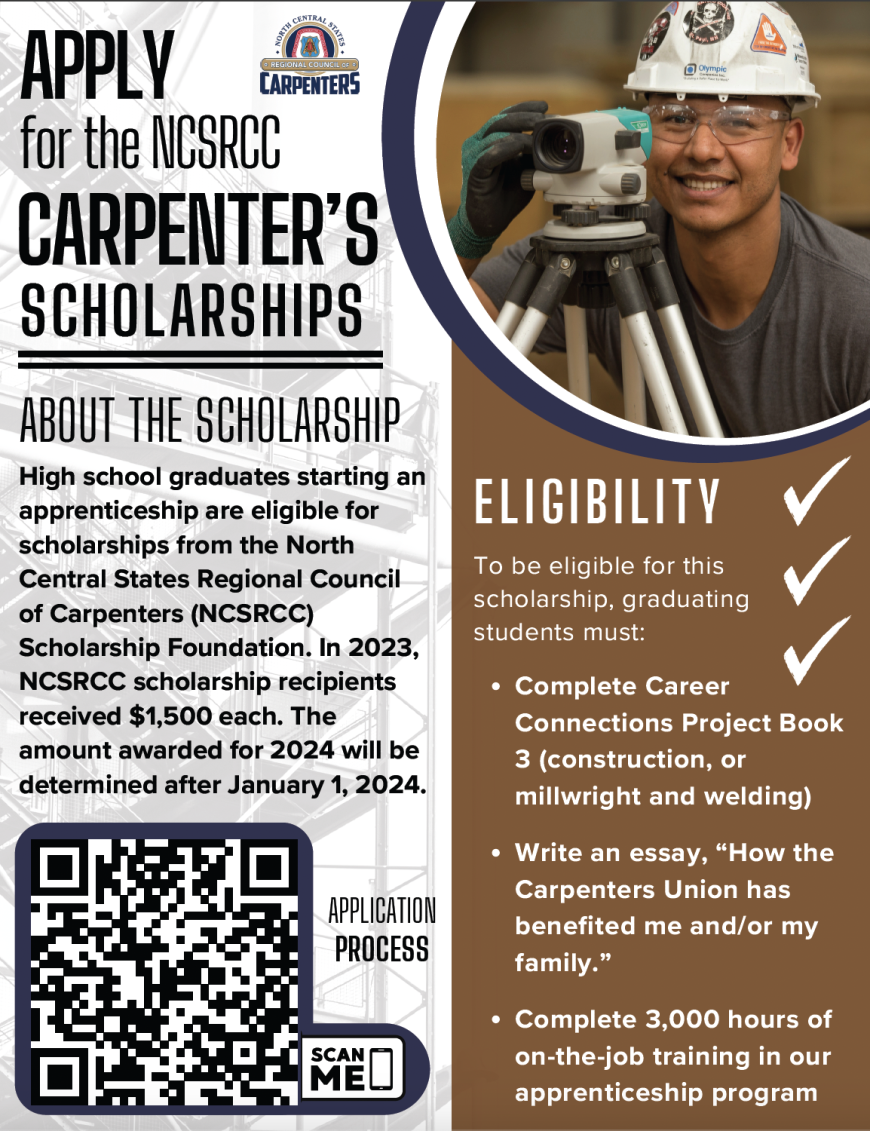Hey there, fellow dreamers and future builders! Grab a cup of coffee, or maybe some fresh-squeezed lemonade, and let me tell you a story. It’s a story about the smell of fresh-cut wood, the satisfying whirring of a saw, and the quiet joy of seeing something tangible take shape under your hands. It’s also a story about a moment of panic, a whole lot of searching, and ultimately, a path to making those sawdust dreams a funded reality: carpentry scholarships.
You see, for as long as I can remember, I’ve been fascinated by wood. Not just any wood, but the kind that tells a story – a weathered old barn beam, a smooth piece of cherry ready for carving, the sturdy grain of oak waiting to become something useful. My hands always seemed to itch to create, to build, to transform raw materials into something beautiful and functional. I spent countless hours in my grandpa’s garage, watching him work, soaking in every tip and trick, the rhythmic tap-tap-tap of his hammer a comforting soundtrack to my childhood.
I knew, deep down, that carpentry wasn’t just a hobby for me; it was a calling. I wanted to learn the trade properly, to master the joinery, understand the nuances of different timbers, and truly build things that would stand the test of time. I pictured myself in a workshop, surrounded by tools, bringing designs to life.
But then, the practical side of life hit me like a misplaced hammer blow: tuition fees. Trade school wasn’t cheap, and the thought of accumulating a mountain of debt before I even started my career was daunting. My heart sank a little. Was my dream just going to remain a dream, a dusty blueprint in my mind?
The Lightbulb Moment: Carpentry Scholarships Are Real!
I remember staring at the school’s fee structure, feeling a knot tighten in my stomach. "There has to be another way," I mumbled to myself. And that’s when the little voice in my head (or maybe it was my grandpa’s ghost whispering in my ear) reminded me: "Scholarships, kid. People offer money for talent and drive."
A lightbulb flickered on. Of course! Scholarships weren’t just for academic wizards aiming for Ivy League universities. They were for everyone with a passion, a purpose, and a willingness to learn. Including aspiring carpenters like me.
That realization was a game-changer. It transformed my despair into determination. I decided right then and there that I would explore every single avenue to find funding for my carpentry education. And let me tell you, it was a journey, but a deeply rewarding one.
Why Carpentry? Beyond Just a Job
Before we dive into the nitty-gritty of how to find these golden tickets, let’s talk for a second about why carpentry is such an incredible path. Maybe you feel the same way I do. It’s more than just a job; it’s a craft, an art, and a vital skill.
- Tangible Results: Unlike some careers where your work feels abstract, in carpentry, you build something real. You can touch it, see it, and know you created it. That satisfaction is immense.
- Problem-Solving: Every project is a puzzle. How do you make this joint perfect? How do you ensure this structure is sound? It keeps your mind sharp.
- Creativity: From custom furniture to intricate trim work, there’s endless room to express your artistic side.
- Demand: Skilled tradespeople are always in demand. A good carpenter will always have work.
- Legacy: What you build can last for generations, a testament to your skill and dedication.
If any of that resonates with you, then investing in your carpentry education is absolutely worth it. And finding woodworking scholarships or trade school scholarships can make all the difference.
The Great Scholarship Hunt: Where to Start Looking for Carpentry Scholarships
Okay, so you’re motivated. You’re ready to learn. Now, where do you find these elusive carpentry scholarships? It might feel like searching for a needle in a haystack, but trust me, there are plenty of needles out there. You just need to know where to look.
Here’s a breakdown of the places I started digging, and where you should too:
-
Your Chosen Trade School or College:
- This is your absolute first stop! Most vocational schools and community colleges have their own scholarship programs specifically for students enrolling in their trade programs.
- What to do: Head straight to their financial aid office or check their website’s "Scholarships" or "Financial Aid" section. They often have school-specific vocational scholarships that aren’t advertised anywhere else. Some might be based on need, others on academic merit (even if it’s just a decent GPA), and many are specifically for students entering a particular trade like carpentry.
-
Industry Associations and Organizations:
- These groups are dedicated to promoting the carpentry and construction trades, and they want new talent to enter the field.
- Examples to search for:
- National Association of Home Builders (NAHB): They often have local chapters with their own scholarship funds.
- Associated General Contractors of America (AGC): Similar to NAHB, many local AGC chapters offer support.
- Construction Industry Associations: Look for state or regional construction associations.
- Woodworking Associations: Groups dedicated to fine woodworking, cabinet making, or furniture building.
- What to do: Visit their websites, look for "Education," "Scholarships," or "Workforce Development" sections. Don’t be afraid to send an email or make a phone call to their local offices.
-
Local Businesses and Unions:
- This is often an overlooked goldmine! Local construction companies, lumber yards, hardware stores, and even individual master carpenters often set up scholarships to support future tradespeople in their community.
- Union Sponsorships: If you’re considering joining a carpentry union (like the United Brotherhood of Carpenters and Joiners of America), they often have fantastic apprenticeship programs that are essentially paid training, sometimes with additional scholarship opportunities.
- What to do: Visit local businesses, ask if they have any community programs or if they know of any local apprenticeship scholarships. Network! Talk to people in the trade.
-
General Scholarship Databases:
- Websites like Fastweb, Scholarship.com, Chegg Scholarships, and the U.S. Department of Labor’s scholarship finder can be useful, but you’ll need to use very specific search terms.
- Keywords to use: "carpentry scholarships," "woodworking scholarships," "trade school scholarships," "vocational scholarships," "construction scholarships," "skilled trades scholarships," "crafts scholarships."
- What to do: Set up profiles, filter by "vocational," "trade school," or your specific program. Be patient; you’ll sift through a lot, but you might find a gem.
-
Community Organizations and Foundations:
- Your local Rotary Club, Lions Club, or other community service organizations often have small, local scholarships.
- What to do: Check their local chapter websites or ask around. These are often less competitive because fewer people apply.
Crafting Your Application: Making Yourself Stand Out
Finding the scholarships is one thing; winning them is another. This is where you get to shine! Remember, you’re not just asking for money; you’re showing them why you’re a worthwhile investment.
-
The Personal Essay: Tell Your Story
- This is your chance to really connect. Don’t just list your accomplishments. Tell them why you want to be a carpenter.
- What I wrote about: I talked about my grandpa, the feeling of satisfaction from my first wobbly birdhouse, and my vision for what I wanted to build in the future. I focused on my passion, my dedication, and my understanding of the value of hard work.
- Avoid: Generic statements. Be specific. What project ignited your passion? What challenge did you overcome?
- Keywords to naturally weave in: "passion for carpentry," "dedication to woodworking," "future in skilled trades."
-
Showcase Your Work (Even if it’s Simple): The Portfolio
- Even if you’re a beginner, you probably have something you’ve built. A small shelf, a picture frame, a repaired chair. Take good photos!
- What I did: I included pictures of projects I’d done with my grandpa, even if they were rough around the edges. I explained what I learned from each one. It showed initiative and a genuine interest.
- Tip: If you haven’t built much, maybe sketch some designs or talk about a woodworking project you plan to do. It shows your thinking process.
-
Letters of Recommendation: Who Believes in You?
- Ask people who know your work ethic and your character. A shop teacher, a mentor, an employer (even if it’s a non-carpentry job), or even a family friend who has seen your dedication.
- What to do: Ask them well in advance, provide them with your resume, your essay, and details about the scholarship so they can write a tailored letter.
-
Academic Transcripts (Don’t Let Them Scare You!)
- Yes, they’ll usually ask for your high school or previous college transcripts. Don’t worry if your grades aren’t perfect. Many trade school scholarships understand that practical skills and passion can outweigh a perfect GPA. Focus on showing improvement, or highlight subjects where you excelled (like shop class, math, or physics).
My Personal Tips for Success
Looking back, here are a few things I learned that I wish someone had told me from the start:
- Start Early, Apply Often: Scholarship deadlines can sneak up on you. Begin your search months before you plan to enroll. And don’t just apply for one or two; apply for as many as you qualify for. It’s a numbers game.
- Tailor Each Application: Resist the urge to copy and paste. Every scholarship committee wants to feel like you wrote the essay just for them. Tweak your essays, mention their specific mission if you can.
- Proofread, Proofread, Proofread: A sloppy application sends a message that you’re not detail-oriented. Get a friend or family member to read it over.
- Follow Up (Politely): If you don’t hear back, a polite email inquiring about the status of your application a few weeks after the deadline is acceptable. It shows you’re engaged.
- Don’t Get Discouraged: You’ll face rejections. It’s part of the process. Don’t let it derail your dream. Pick yourself up, learn from it, and keep applying!
- Network: Talk to current carpenters, students, and instructors. They often know about local opportunities or have advice that you won’t find online.
Beyond the Money: The Unseen Benefits of Scholarships
Winning a scholarship isn’t just about the financial relief, although that’s huge. It also brings other incredible benefits:
- Validation: Someone believes in your potential enough to invest in you. That’s a powerful motivator.
- Networking: Scholarship providers often connect you with industry professionals, opening doors for future mentorships or job opportunities.
- Focus: With less financial stress, you can truly focus on your studies and master your craft.
Your Future in the Woodshop Awaits!
My journey wasn’t easy, but securing those carpentry scholarships changed everything for me. It allowed me to immerse myself fully in my studies, to learn from incredible instructors, and to hone my skills without the crushing burden of debt. Today, I’m building a career I love, and every time I pick up a saw or hammer, I remember the path I took.
If you’re out there, with that same itch to create, that same love for wood, don’t let the cost hold you back. The world needs skilled carpenters, and there are people and organizations out there who want to help you achieve your dream. Start your search for carpentry scholarships today. Tell your story. Show your passion. And get ready to build not just beautiful structures, but a fulfilling future for yourself.
The sawdust is calling. Go answer it!


